Hooked on the Arctic
1 April 2020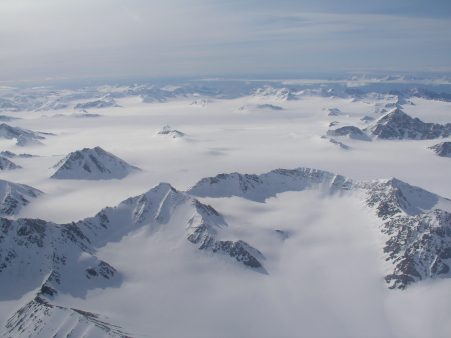
By Irene Quaile
Back in 2007, I was sitting in my office at Germany’s international broadcaster Deutsche Welle. I opened an intriguing email from Soundprint Media, a production company in the USA. They were proposing a joint funding application from recognised feature-makers in several countries to make a series of radio documentaries highlighting different aspects of polar research as part of the International Polar Year 2007-2009.
I was already a fan of ice and snow I spent my holidays hiking in the Swiss Alps, and had experienced the extremes of winter in outer Mongolia for a feature on indigenous people and environmental protection. So far, though, I had not ventured up to the far north of the planet.
The US National Science Foundation approved the project, Pole to Pole, and I embarked on my first journey to the Arctic, the start of a never-ending love affair with the frozen north – and also of a deep concern about how we are changing it.
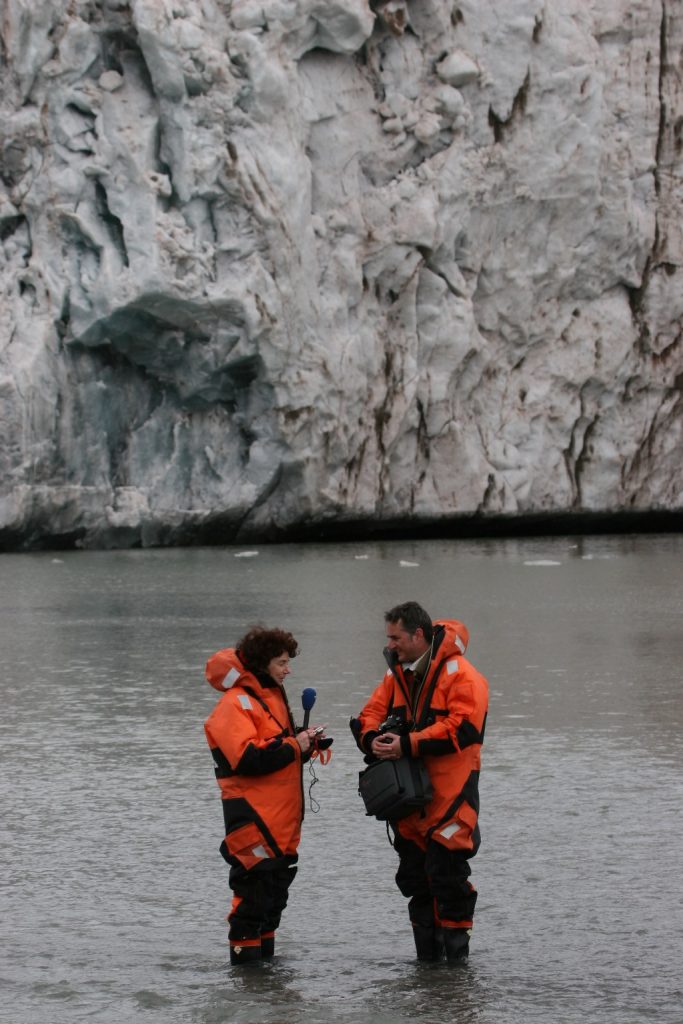
The half-hour documentary “When the snow melts on Svalbard” resulted from the first trip to the scientific base at Ny Alesund. “Climate Change College in Alaska” won an international broadcasting award – and also led to the birth of the “Iceblog”, now the main focus of my journalistic work. Greenland, the “ice island” was next. I was hooked on the Arctic. Some of my colleagues were sceptical about whether there would really be enough interest to sustain my specialisation on polar issues and climate change. Things have changed quite a bit since then.
Why the Arctic?
While travelling in the Arctic on land, on ice, on a research ship in the winter’s night; or flying over the vast whiteness where clouds, snowy peaks and frozen ocean become almost indistinguishable; through encounters with indigenous hunters, oil workers, scientists, tourist guides, mums and kids, I developed a deep relationship to the Arctic; its landscapes, its people, its creatures, its climate. That fascination that can at times turn into an obsession is my basis for covering the circumpolar north.
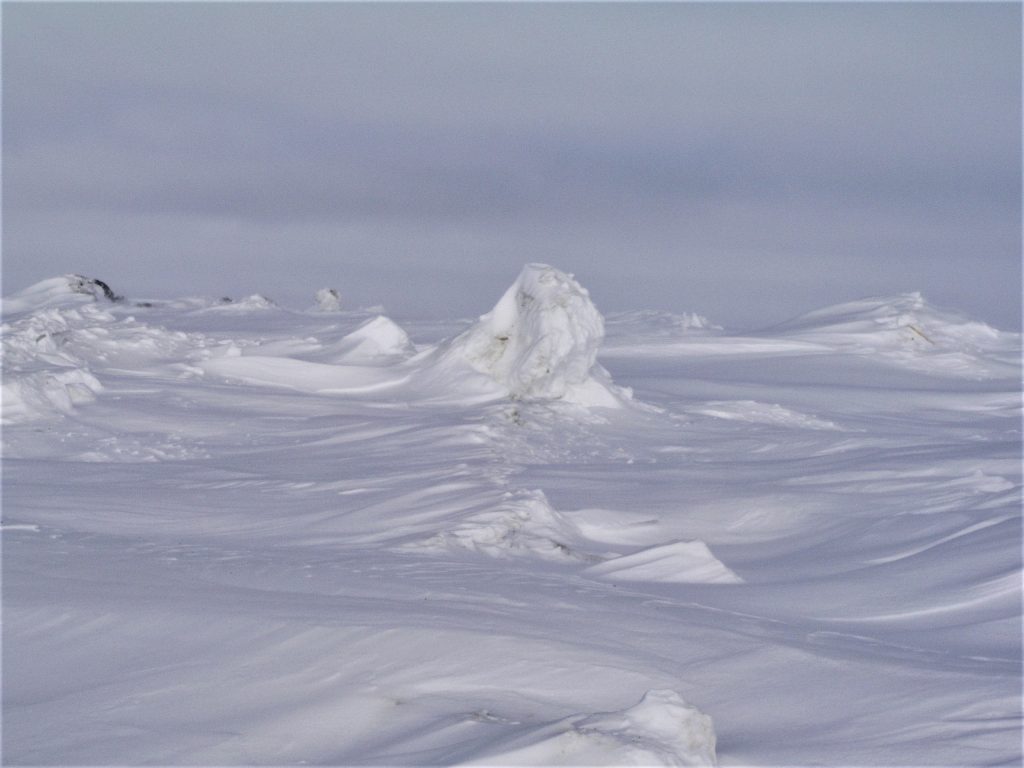
There was a time when I had my work cut out interesting editors in stories about the Arctic. These days, the region is “in” – not always for the happiest of reasons. Climate warming is affecting that part of the world more than twice as fast as the rest of the globe. The widespread changes that come with it bring problems, challenges, opportunities and endless scope for debate, difference, dispute.

As a non-Arctic resident, a Scot living in Germany, an outsider, I have become acutely aware of differences in perception between those who live there and those who look on. I remember a first encounter with Inupiat whale-hunters in Barrow, Alaska, who jokingly commented “here come the Greenpeacers” when the group of young climate students I was accompanying took up their spontaneous invitation to join a “whale feast”.
“Give me a solar-powered snowmobile and I’ll use it”, was the comment from a young man living in a community dependent on its oil industry funding – a community that has no roads and relies on air and ice as a means of transport, in response to criticism of pollution from burning fossil fuels.

Awareness of those differences of perceptions and priorities, respect for those who live and work there are key to understanding and describing what goes on in the high north. So too is the realisation that different ethnic groups and nations share the north of our planet. There is not just one “Arctic”.
From remote wilderness to global playball
There were times when the Arctic was either irrelevant to the rest of the globe, or an idealised, exotic, pristine wild place. Globalisation and multimedia have changed all that. But it is the warming of our climate that is really transforming both the Arctic itself and global perception of it. It plays a key role in influencing the global climate. “What happens in the Arctic doesn’t stay in the Arctic” has become a frequently-quoted buzzword. It goes (almost) without saying that what happens in other parts of the planet doesn’t stay out of the Arctic either. “Everything is connected”, was the conclusion drawn by one of the young travellers on that trip to Arctic Alaska back in 2008. Every day seems to prove him right – again.
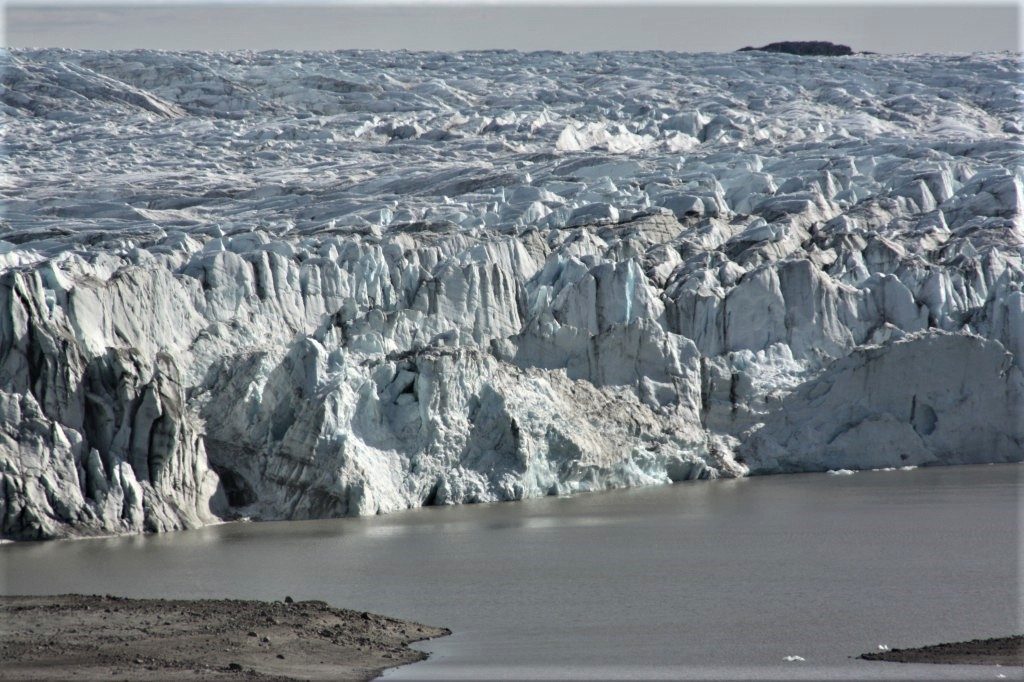
As melting ice makes the high north more accessible, the Arctic Ocean is also increasingly being regarded as a transit route between continents. So many players think they have a right to a say in what happens up north and to get a piece of the Arctic cake – not least the distant megapower China.
Travel and live encounters are things we can no longer take for granted in this age of the corona crisis. Time to make even more of the potential of our digital, multimedia world to stay informed – and stay in touch.
As I write, Arctic Summit Science Week is taking place – not, as planned, in Akureyri, Iceland, but online, from desk to desk, home to home, around our digitally inter-connected world. I will join the group from rural Germany shortly.
White frozen ocean waves, shades of blue and grey, the pinks of winter twilight, the sparkling tingle of ice crystals in the clear air – and the problems of everyday life in remote communities, the struggle to balance development and tradition, tourism and infrastructure, preservation and transformation; the challenge of adapting to a rapidly changing environment, as fragile ice and no-longer-so permanent permafrost shift the parameters of everyday life at the top of the world.
The high north is full of life and stories there for the telling.
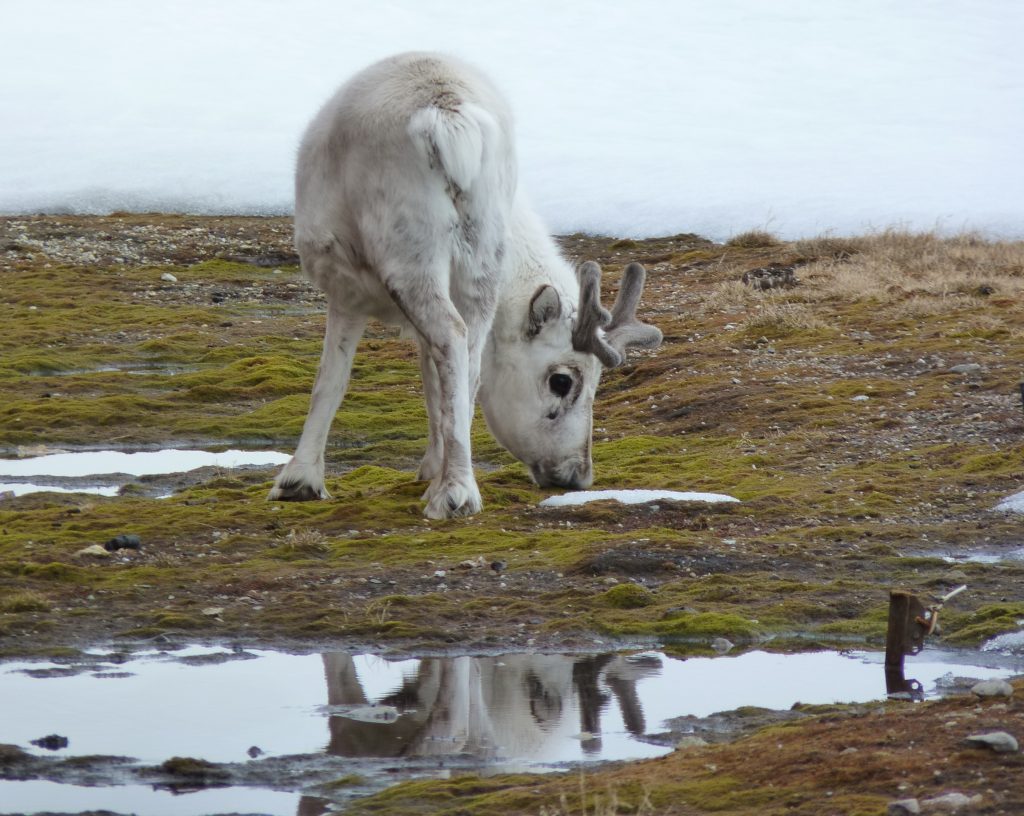

Irene Quaile was features editor, environment correspondent and host of Living Planet with the German broadcaster Deutsche Welle until 2019. She has also worked with the BBC, ABC Australia and German national radio and TV. Her Ice Blog is at www.iceblog.org. Previous posts can be found at blogs.dw.com/ice
- Impressions from our qualitative expert interviews on changing political priorities in the Arctic
- From ice to inspiration: A glimpse into the Arctic Circle Assembly
- Seasonal Geopolitics of the North Pole
- The Polaris expedition and the problem of bias in Arctic exploration history
- Beaches, bugs and plastic in Arctic Canada